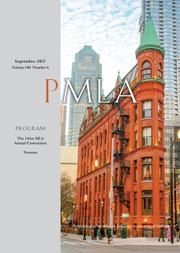Crossref Citations
This article has been cited by the following publications. This list is generated based on data provided by Crossref.
Muharram, Mohammed
2025.
Making the Invisible Visible: How the Blue Humanities Translate Climate Change to the Public.
Public Humanities,
Vol. 1,
Issue. ,
Ortiz, Ricardo L.
2025.
How to Do Things with Public Humanities.
Public Humanities,
Vol. 1,
Issue. ,

